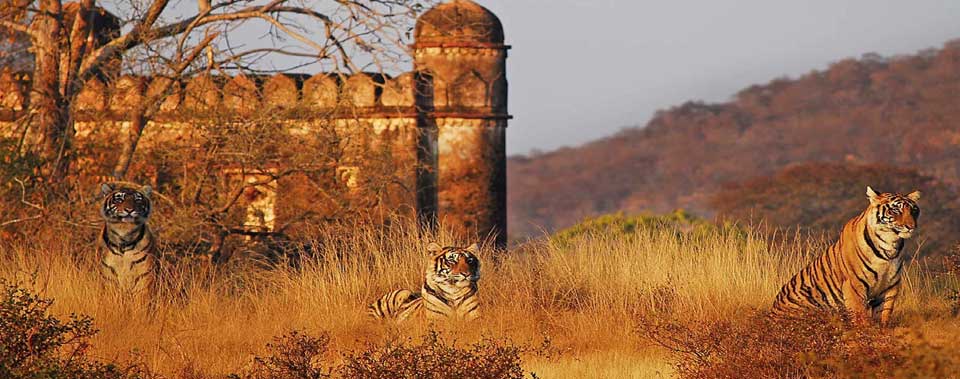The Ranthambore forest, which has got its name from the famous Ranthambore Fort, situated in the middle of the jungle, witnesses the long vibrant history of the imperial era. During the regal era, before the independence of India, there was enormous forest cover spans almost entire Indian sub-continent. But with the time as the population grew and industrial development begun, to cater the need of the people, the exploitation of forests was started which led to the massive destruction of the green cover in the country. The shrinking forest cover and wildlife in the country compelled the government to give attention on this mounting problem and thus various policies were introduced to save the remaining forests and the wild inhabitants of the forests by making them reserve forests and national parks.

Before the end of the imperial era in Rajasthan, the Ranthambore forest was the exclusive hunting ground for the Royal members of the Jaipur Kingdom. The forest was owned by the Maharajah of Jaipur and managed by their hunting department. The local residents of the villages around the forest were allowed to take the forest produces after paying the little yearly tax to the kingdom's treasury department. However, at that time, the population density around the forest was so low that there was hardly any impact on the Jungle due to human interference. Even being a hunting place for the Jaipur Royals, there was no any significant damage could be possible to such a large forest and its rich wildlife species due to the occasional hunting practice.
However, due to the severe exploitation of the forest areas in India, the forest conservation policies were badly needed in the country by mid of the twentieth century. Thus, in 1953, the Rajasthan forest act came into the force to provide some legal protection to the forests in Rajasthan. Though it was not enough to completely safeguard the forest cover, but it has slowed down the exploitation little bit. In 1955, the entire forest cover around Ranthambore was declared as the Sawai Madhopur Sanctuary and thus any kind of commercial activity in the forest was completely prohibited. However, the count of tigers in the forests was diminishing and this wild predator came on the verge of extinction in the country. So, a tiger conservation program Project Tiger was instigated in 1973 by the government of India. An area of 60 sq miles of Sawai Madhopur Sanctuary was taken under the project Tiger Scheme and the area was declared as the Tiger reserve area.
By 1980, more than 12 villages were shifted out of the sanctuary and an area of around 282.03 sq km was declared as the national park. Since then the area of tiger reserve and the national park increased over the time by including the adjacent forest areas in the protected zone. In 1983, 647 sq km of forest that was lying adjacent to the north side of the Ranthambore National Park was named as the Kela Devi Sanctuary and included in the tiger reserve zone. In the same way, 130 sq km of forest lying beside the southern periphery of the park was declared as the Sawai Mansingh Sanctuary in 1984 and also incorporated into the Ranthambore tiger reserve. Due to these tiger conservation efforts, the count of tiger has surged tremendously after 1973 since the project tiger was initiated. According to the latest census in 2014, the count of tiger reached around 64 in the Ranthambore tiger reserve. Safari in Ranthambore National Park is considered best in the world to view wild tigers in their natural habitat.